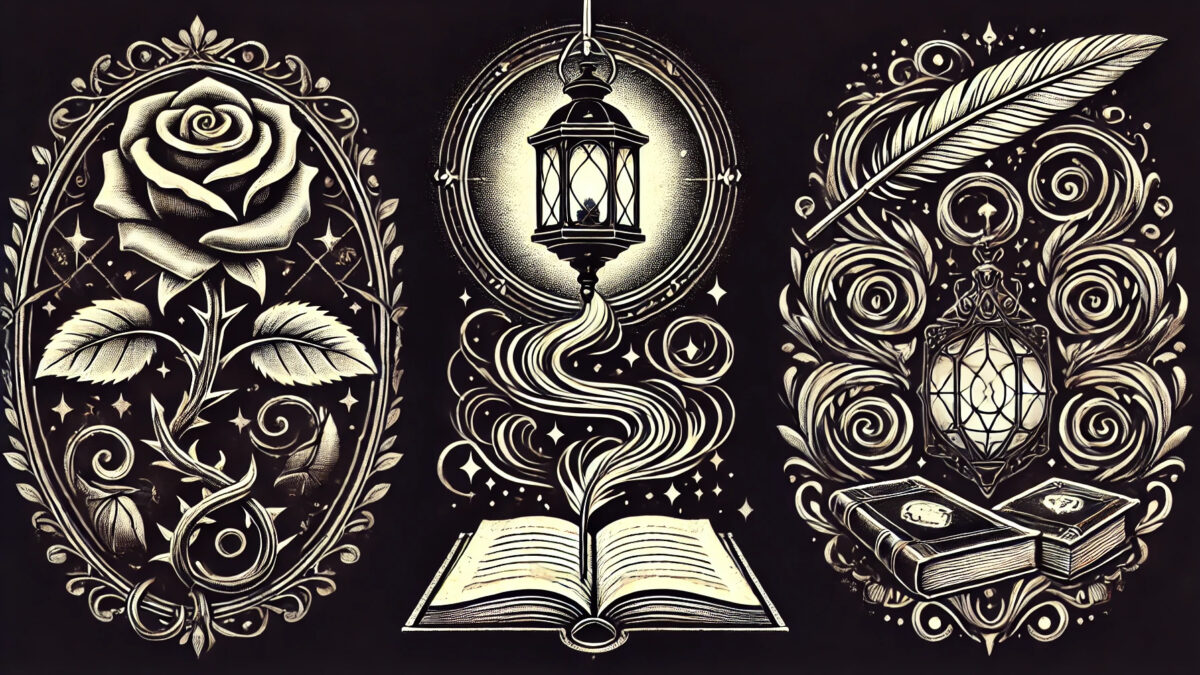

Psychological horror in Gothic literature plays with the mind, setting itself apart from any regular monster-filled scare fest. It’s less about jump scares and more about creeping dread that sticks with you. This genre loves to explore terror that’s rooted in our thoughts, emotions, and the unknown parts of the human psyche.
Gothic fiction traces its lineage back to the late 18th century, establishing itself as the spooky forebearer of all things horror. With novels like Mary Shelley’s “Frankenstein” and Bram Stoker’s “Dracula,” it started weaving intricate tapestries of gloom and doom, mixing in hefty doses of inner turmoil alongside hulking creatures and dark castles.
Some all-stars in the field, like Edgar Allan Poe and Shirley Jackson, put psychological horror right in the front row. Poe’s tales messed with your mind, pulling you into madness just as much as Jackson’s tales of eerie supernatural events coupled with sinister human behavior.
Why do these bone-chilling narratives still keep us turning pages even today? It’s that irresistible pull of fear that toys with your sense of reality, mingling with the twisted corners of the human subconscious. Psychological gothic horror thrives on this, drawing us back with tales that not only frighten but also puzzle and provoke deeper reflection.
Core Elements of Psychological Horror in Gothic Fiction

Psychological horror in Gothic fiction knows how to keep its readers squirming because it really gets into your head. Focusing on the depths of the mind, these tales give us characters battling not just the world around them, but their own thoughts and fears.
Isolation and paranoia are a big deal in this genre. Imagine walking through a misty moor or an abandoned manor, where even shadows play tricks on you. The desolate settings amplify the characters’ inner turmoil, pulling you into their scary, paranoid world.
Location is everything. Gothic settings create vibes that are spooky to the core, from drafty castles with creaky floorboards to gloomy landscapes that seem to come alive with menace. It’s about atmosphere as much as it is about the story—a backdrop that’s as much a character as the people in it.
Unreliable narrators are the dark horses of gothic fiction, turning ordinary tales into something mysterious and creepy. When you can’t fully trust the storyteller, every page turn comes with a deliciously uncertain fear.
These elements layer on the tension, crafting stories where mind games and mystery aren’t just plot devices—they become powerful tools that twist reality.
Real-World Examples: Psychological Horror in Iconic Gothic Works

Edgar Allan Poe’s “The Tell-Tale Heart” takes us inside the mind of a character who’s not entirely stable. Their increasing paranoia and obsession with a heartbeat you can’t actually hear ramps up the tension, leaving you tangled in a web of unease.
In Charlotte Perkins Gilman’s “The Yellow Wallpaper,” we’re invited to witness the descent into madness through the eyes of a woman trapped in a room and, slowly, her own mind. Her hallucinations and growing fear create a chilling experience that resonates even today.
Daphne du Maurier’s “Rebecca” serves up psychological manipulation with its haunting storyline. Starting with seeds of jealousy, the character Rebecca casts a long shadow, messing with identity and reality until you start questioning what’s real.
These works showcase the power of psychological horror to unsettle and engage. Authors use these mind-bending tactics to prompt readers to explore the darker side of thought and fear. It’s this captivating blend of fear and fascination that makes psychological horror a mainstay, forcing us to confront the mysterious machinations of the human mind.
Impact and Legacy of Psychological Horror in Modern Culture

Psychological horror in Gothic fiction laid a foundation that’s strongly influenced what we see in today’s literary and cinematic worlds. Its legacy runs deep, with a skillful mix of dread and emotional complexity now permeating everything from psychological thrillers to horror films.
Modern authors and filmmakers have borrowed Gothic fiction’s knack for exploring the human mind, never losing that sense of mystery and suspense. These stories grip audiences by triggering those same visceral reactions—fear, curiosity, and suspense—that Gothic tales have brewed for centuries.
The genre’s ability to evoke psychological responses from readers and viewers is part of its staying power. That gut-wrenching feeling of being unsettled yet intrigued keeps us coming back for more. It’s clear that we enjoy a good mind-bend, whether it’s through literature or on the big screen.
Looking ahead, it’s likely we’ll see psychological horror evolving even further, tapping into new fears and anxieties of our era while continuing to echo its Gothic roots. It’s that sweet mix of old-school eeriness and modern storytelling that keeps psychological horror thriving and keeping us deliciously on edge.



